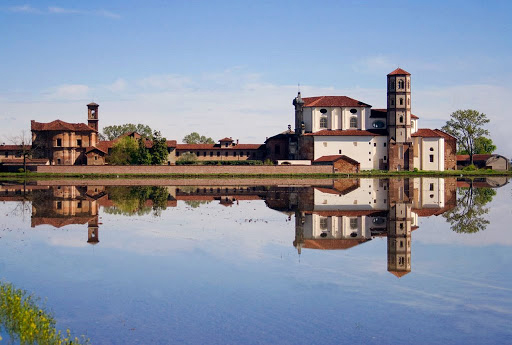1-WEEK ITALIAN EXCELLENCES PRIVATE TOUR
Northern Italy
WHAT'S INCLUDED:
Accommodations in Double Room with Continental Breakfast (*):
- Days 1 & 2: 3* to 5* Hotel in Lake Garda area
- Days 3 & 4: 3* to 5* Hotel in Parma area
- Days 5 & 6: 3* to 5* Hotel in Langhe area
- Day 7: 3* to 5* Hotel in Milan city centre
(*) The Hotel list is available upon request
Transfers (**):
- Day 1: Pick-up at your accommodation in Milan and transfer to your accommodation in Lake Garda area – Stopover in Lake Iseo area
- Day 3: Transfer to your accommodation in Parma area – Stopover in Modena
- Day 5: Transfer to your accommodation in Langhe area – Stopover in Grinzane
- Day 7: T Transfer to your accommodation in Milan – Stopover in Vercelli area
(**)All transfers by private car (2 pax)/ minivan (3 to 6 pax)/ minibus (7 to 10 pax)
Private Guided Visits / Tours (***) / Activities:
- Day 1: Visit of a Franciacorta sparkling wine cellar with tasting in Lake Iseo are - Visit of a Lugana wine cellar with tasting in Lake Garda are
- Day 2: Full-day excursion to Verona area -2-hour private walking tour of Verona city centre with an Authorised Tourist Guide - Visit of a Valpolicella wine cellar with tasting
- Day 3: Visit of a Balsamic Vinegar of Modena Producer with tasting – 2-hour Parmesan Cooking class in Parma area
- Day 4: Full-day excursion of Parma area with an Authorised Tourist Guide - Visits to a Parmesan Cheese factory, a Parma Ham factory and a Lambrusco wine cellar with tastings
- Day 5: Visit of a Barolo wine cellar with tasting
- Day 6: Full-day excursion to Langhe area – 2-hour Truffle Class and lunch - Visit of a Barbaresco wine cellar with tastings
- Day 7: Visit of a rice farm and 2-hour Risotto Cooking Class in Vercelli area
(***)All tours by private car (2 pax)/ minivan (3 to 6 pax)/ minibus (7 to 10 pax)
Admission Tickets to:
- Castello di Grinzane Cavour in Langhe area
Full emergency assistance 24 hours/day by our Back Office
List of recommended restaurants and deli shops along the itinerary
All taxes
Options:
- Pick up at Milan Airport /Railway Station at the start of the tour
- Accommodation in Milan the night before the start of the tour
- Drop off at Milan Airport / Railway Station at the end of the tour
- Other options upon request
DAY 1 – FRANCIACORTA & LAKE GARDA
Benvenuti in Italia, welcome to Italy.
Franciacorta is located in the heart of Lombardy, near Milan, on the southern shores of Lake Iseo. Its rolling hills, bordered to the west by the River Oglio and the northeast by the last offshoots of the Rhetic Alps, owe their ancient origins to the glaciers that, retreating over 10,000 years ago, created the amphitheatre within which Franciacorta lies. The morainic origin gives the various soils of this area an extraordinary mineral wealth; this, combined with the most advanced techniques, allows to get the best sparkling wine in Italy, rivalling with French Champagne.
Franciacorta is a DOCG sparkling wine (Controlled and Guaranteed Designation of Origin), produced according to the so-called “Classic method”, that is wine is fermented first inside the barrel and then inside the bottle after the addition of yeast, nutrients for the yeast, and sugar. Franciacorta is mainly made with Chardonnay and/or Pinot Noir grapes, and has a savoury, fresh, fine and harmonious taste, making it an ideal wine at all meals, from aperitif to second dishes, from the simplest to the most complex.
Later on, we will move to another wine area, Lugana on Lake Garda. The area is characterized by layered clays of morainic origin and sedimentary nature, mainly limestone, rich in mineral salts. These chemical-physical characteristics give the wine vigorous, sharp scents, between almond and citrus, as well as acidity, flavour and a well-balanced structure. In Lugana the microclimate, positively influenced by the temperate breezes of Lake Garda, is mild and quite constant, with few thermal excursions between day and night. A "climate cradle" perfect to enhance the peculiarities of the local grape, the Turbiana. Lugana is one of the great Italian white wines, with many different versions, firm, sparkling wine and even “late harvest”. Lugana can be cheerful, light, bubbly but also structured and deep, to keep in the cellar and enjoy after a few years.
As to food, this is the land of “polenta”, cornmeal boiled into a porridge and eaten directly or baked, fried or grilled. But also “casoncelli”, raviolis stuffed with sausage meat, sage and more butter, and many varieties of cured meats and cheeses: Taleggio, Silter, Bagoss, Quartirolo.
In these days you will stay in Sirmione, the “Pearl of the Lake”, famous for its Castle, built by the Scala family, closing the entrance to the Peninsula.
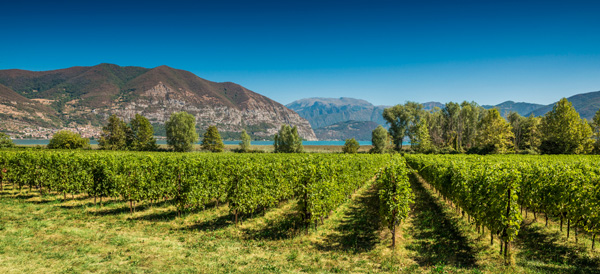
DAY 2 – VERONA & VALPOLICELLA
In a stretch of land designed in accord with the bends and twists of the River Adige, we find Verona, a visually stunning city of excellence. It is a city of many faces whose history can also summarize Italy's history – think of the works left by the Romans, the Medieval streets and the “palazzi” of the Renaissance.
The city’s commercial hub is Piazza delle Erbe, where the original Roman Forum was. This piazza represents the synthesis of several different historical moments: the 13th-century buildings – among which Casa dei Mercanti (House of Merchants) stands out - the painted facades of the Mazzanti Houses and the Madonna Verona Fountain, with its central statue from the Roman Epoch. Also dating back to Roman times is the most symbolic monument of Verona, the Arena (1st century B.C.). Originally constructed to host gladiator combats, it saw a long period of abandonment before it returned to the limelight with a new form of entertainment in 1913: after having hosted the premiere of Aida in that year, it has been known around the world for the sounds of opera that emanate from its stage.
Then, Romanesque Verona lies in its imposing Duomo, as well as in the Cathedral of St. Zeno, and in Castelvecchio, which looks out from the banks of the Adige; it symbolizes the Medieval power of the Scaliger family, to whom the realization of the crenellated Scaliger Bridge is attributed.
The palazzi of Verona narrate its long history of wealth and power. In Piazza dei Signori - which sits under the dominating Lamberti Towers - the portico of the Loggia del Consiglio catches the eye; in the 16th century, political life took place here, while the Palazzo di Cansignorio and Palazzo del Comune (or “della Ragione”) were the seats of military, judicial and administrative power. Nearby lie the Scaliger Arches, in the same-named piazza, and some of the most suggestive views of the city, including glimpses of the monumental tombs of the Lords of Verona.
Finally, the Verona of Shakespeare and the “star-crossed lovers” is a worldwide legend and lives indefinitely through the places made famous in Romeo and Juliet. Yet the original literary work was created by Luigi da Porto, a writer from Vicenza, in the 1500s; it eventually circulated in Europe, reaching England. It was the Bard who rendered it the immortal story it is today, allowing Verona to rest as one of the most admired and visited places in the world.
And remember: Verona is a very elegant city, famous for its classy shops!
A few kilometres west of Verona, in a landscape of valleys and hills descending from the mountains to the plains around the Adige, Valpolicella hosts the vineyards supplying the grapes for two of the greatest red wines of Italy: Recioto and Amarone. The starting point for both wines is the same: ripe and high-quality grapes, which are harvested and stored in the "fruttai", well ventilated and dry places, where they are left to dry for 100 - 120 days. Grapes with their thick skin lose water and sugars concentrate. After crushing, fermentation takes place, shorter for the Recioto, to leave a high percentage of sugars, longer for the Amarone. Two wines for connoisseurs, which you can enjoy at one of the most beautiful wineries in the area.
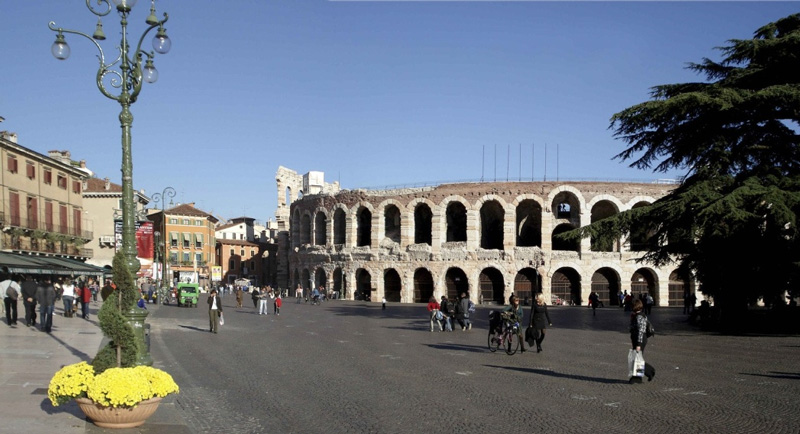
DAY 3 - MODENA
Modena is renowned worldwide for the famous people - Enzo Ferrari and Luciano Pavarotti above all - who were born and lived here, and for some of its gastronomical products. The city is the capital of the so-called “Motor Valley”: actually, the factories of the famous Italian sports car makers Ferrari, De Tomaso, Lamborghini and Maserati are located here.
The city of Modena hosts little jewels of art, such as the Romanesque Cathedral, wholly constructed with white marble and located in the heart of Modena, in Piazza Grande. The Piazza with the Cathedral and the Ghirlandina Tower is one of the 48 Italian sites on the UNESCO World Heritage List. The Ghirlandina, the bell tower rising majestically over the rooftops, derives from its marble balustrades around the steeple, suggesting the lightness of garlands.
In Maranello, you may visit Museo Ferrari, not just a collection of the past but an extraordinary experience of the world of Ferrari and sports car racing! How exciting to see the most beautiful cars in the world, exceptional artworks made by modern mechanic artisan masters.
Afterwards, you will move to the estate of a Balsamic Vinegar of Modena Producer, to delight in the unique, enticing taste of traditional balsamic vinegar. Balsamic Vinegar of Modena is obtained from partially fermented, cooked and concentrated grape must. The grapes come exclusively from the area's vines, and the most critical processing phase is refinement inside containers of fine wood, such as oak, chestnut, oak, mulberry and juniper. Want to know more about this unique delicacy? Read the article in our BLOG.

DAY 4 - PARMA
Your next destination is called “The Capital of Food”, and this is a well-deserved denomination, as Parma is known worldwide for its delicious food products.
Parma is known for its delicious food products. First, you will visit a Parmigiano Reggiano factory, where you will see cheese masters at work: an extraordinary way to get into the area's production culture and discover how a true gastronomic gem is made (more about Parmesan cheese in our BLOG).
Later on, visit a Parma ham factory, where you will learn the secrets of the most delicious ham, Prosciutto di Parma (to know more about raw ham in Italy, read the article in our the BLOG)
And finally, you may savour authentic Italian cuisine in a fun-filled cooking class led by a local “rezdora” (a female cook in the Parmesan language). Immerse yourself into the tradition of fresh Italian pasta and study the secrets of preparing pasta dough from scratch, using just flour and eggs. You will make your own “Tortelli d'erbetta” (Parma's most traditional pasta with a filling of ricotta cheese and chards) and delicious tagliatelle with tomato sauce – all local ingredients! Once your fantastic meal is ready, you will enjoy what you prepared, matched with a glass of local Lambrusco wine. A very tasty experience at the end of an unforgettable day!
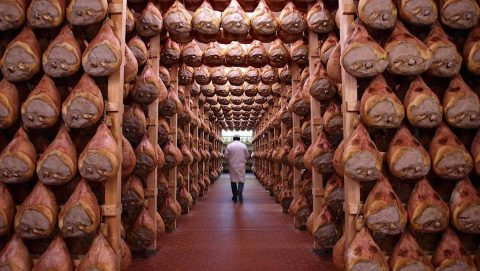
DAYS 5 & 6 - LANGHE
You will be startled by the beauty of Piedmont, the region where the landscape changes colours according to the rhythm of the seasons! For its outstanding landscapes, the area of Langhe-Roero and Monferrato has been recently recognized as a UNESCO World Heritage Site. Think of rolling hills, quaint villages struck on cliffs, prized vineyards and gastronomic traditions; this is Langhe.
Alba is the most important town in the area. Known as the city of truffles, wine and culinary delights, it was founded by the Ligures, an ancient Indo-European people.
Barolo is known above all for its beauty and incarnates its most noble Piedmontese wines' essence (Barolo, what else?). Tucked into the hills, Barolo was a Medieval borgo belonging to the Gonzagas and Savoias; it is dominated by the Castello Falletti, the seat of the Comune’s Enoteca and of the Museum of Peasant Life, a collection of antique objects and instruments.
During your stay, you may go up and down the hills among castles and vineyards and reach one of the Italian historical wine estates to visit the ancient cellar with hundreds of barrels, casks and barriques. In Barolo, you may also see WIMU, Italy’s most innovative wine museum and one of the world’s most important. It is set in the halls and rooms of a castle with a thousand-year history. Ultimately, you will have a superb wine tasting of Barolo and Barbaresco Wine.
So, what about food? Taste gorgeous tagliatelle, locally called “tagliolini” or “tajarin”, served with meat ragout, sausage ragout, or melted butter and grated truffle according to the season. Then, try veal meat in any version, especially “brasato”, cooked in Barolo wine. The typical dish par excellence is “Bagna Cauda”, a garlic, anchovy and olive oil sauce into which seasonal raw vegetables are dipped. Hazelnut cake, soft and served with a good glass of Moscato d’Asti, is the traditional ending to every lunch and dinner!
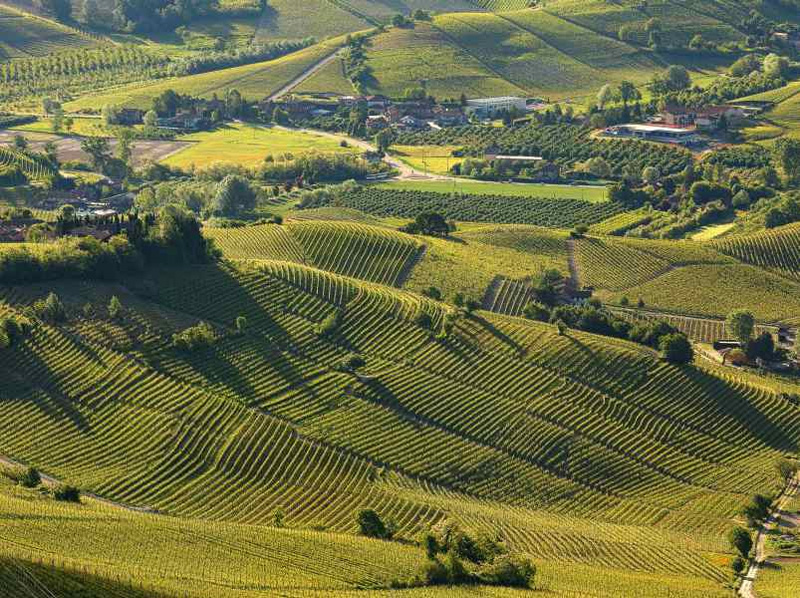
DAY 7 – VERCELLI
The history of rice in Vercelli area is linked to two factors: the need to make clay soils that were practically sterile productive and the possibility of exploiting the water resources of the large rivers descending from the Aosta Valley and Monte Rosa and the myriad of small waterways and springs of mountain origin. Rice arrives permanently in Italy and Vercelli only in the Renaissance, following the winding and slow ways of cultural contacts between peoples, and the new cereal is confirmed as useful in the clean-up of marshlands. Today, rice farming in Vercelli is among the most modern in the world, thanks to the introduction of new technologies, new agricultural techniques and new varieties.
Cultivating rice means, above all, knowing how to dose water in the entire period of rice growth. Water is the thermoregulator needed to make rice plants deal with the strong thermal changes of our temperate climate. But knowing how to flood and then dry the paddy is also the most effective method to fight weeds. Water must enter slowly and reach all the areas of the paddy chamber with the same depth and it must always flow to provide oxygen necessary for the germination of the seed and counteract the formation of rotting substances, and in the same way, it must exit quickly when the paddy needs to be put dry.
Risotto is one of the most important dishes of the tradition of Italian cuisine, it is a symbol of Italianness. We do not know exactly when it was born or who was its inventor, undoubtedly risotto is the result of centuries of history. Its preparation is quite demanding but it teases almost every palate. In a cooking class dedicated to rice, you will get to know the different types of rice, cooking methods and combinations, and in the end you will be able to properly prepare a good creamy risotto, with whole but cooked grains.
The tour is over, but the memories of this fantastic journey will accompany you for a lifetime!
Arrivederci for another tour with VITOR, Visit Italy on the Road.
